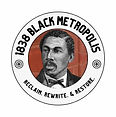We have the receipts! Finding early Black organizations financial support for Freedom Seekers
- Michiko

- Oct 12, 2023
- 4 min read
Updated: Aug 9, 2024
We are kind of passionate here about early Black organizations supporting freedom seekers. We think our ancestors were AMAZING!
As thousands of freedom seekers poured into Philadelphia over the years, Black people were here for it. We've talked about that here on this blog post thousands helping thousands.
We are countering a narrative that focuses on individuals in a 10 year time period by emphasizing the full professional level organization skills of a whole population of people over a 60 year time period. For example, we focus a lot on William Still, but the underground railroad networks and organizations of people that he wrote about were already in existence for years when he came to Philadelphia in 1844.

So let's do some myth busting.
Myth: William Still started the Underground Railroad
We can see how this one is easy to believe. There's a William Still week, there have been three biographies on Still in the past 10 years. We love William Still too.
The Vigilance Committee is the one you see in Harriet in this clip. This is what most people picture when we say 'Underground Railroad'. But this is from 1855.
The First Vigilance Committee was founded in 1839, 15 years earlier. Just to give you some context, William Still and Harriet Tubman were 18 years old then.
Here's an excerpt from the Underground Railroad where the 'old committee' is mentioned; ie the first Vigilance committee.
The first Vigilance Committee did great work but then sort of fell apart after the 1842 mob attacks. So there was a period of no committee from about 1842 to 1852. That didn't mean no organized support for freedom seekers - see Mary Lewton below - that just meant no Vigilance committee during that time.
There were people (Robert Purvis, N.W. DePee, Jacob C. White, Sr.) in the first committee who were also in the second. So they bought all that organizing skill with them into the second.


And the Vigilance Committee wasn't the only Black organization doing the work of helping freedom seekers.
Mary Lewton, for example, organized assistance for thousands of people to transition into a new life by providing shelter and support for them in and around Paschall's Alley.
She started her church, Union A.M.E Church in 1809 - that's 43 years before the second Vigilance Committee. William Still wasn't even born yet.
Myth - The early Vigilance Committee records were destroyed
I think this myth came from the story that the Vigilance Committee records were hidden in a cemetery vault and then that Robert Purvis destroyed them in 1850 because of the fugitive slave act. There may be some truth to that BUT follow the money people.
Jacob C. White, Sr. was a leader in the first Vigilance Committee and he kept receipts. LOTS of them.

So in his file in the Leon Gardiner Collection at the Historical Society of Pennsylvania we found this receipt. It says:
Phil, Jan 8th, 1840
To the Vigilant Committee of Phil
To Shepard Shay
For Clothes
2.75
Repayment
S (signed) Shepard Shay

Here the first Vigilance Committee is paying for clothing to Shepard Shay, a Vigilance Committee member and a clothing dealer.

From the 1838 census we know that Shay lived on Prosperous Alley, was married and was a Clothes Dealer.

Here is he on our interactive map which now layers in old maps so you can see the old and new streets.

But we also have the Vigilance Committee notes. Oral history is that this book was rescued from a church that was about to be destroyed. Knowing what we now know about how close Jacob C. White lived to two Black churches and a Quaker meeting house, none of which are still standing, we think that story might have some truth to it.
But the bottom line is the book - all the notes - all the casework - for a four year period from 1838-1842 - still exists. In fact, we host it here on our website (courtesy the Historical Society of Pennsylvania).
And in that book, we found a note where, after three months of helping nearly 50 freedom seekers at the end of 1839, there were expenses incurred.
One of them was clothing expense. And that's where we see the note to reimburse Shay - this note corresponds to the receipt found in the archives. We see that Shepard Shay was reimbursed about $2.75 ($100 in today's dollars) for helping to provide clothes for new arrivals.
A lot of People Doing Things
One of our most important historians for Black History in Philadelphia, Professor Emeritus Emma Lapsanky-Werner, reminds us that "history is just a lot of people doing things" (Emma Lapsanky-Werner at the Fairmont Park Conservancy Underground Railroad hike, 10/7/23).

Maybe Mary Lewton and Shepard Shay didn't realize how incredible they were; how their work created energies of joy; how their work kept the pressure on the eradication of the slavery in the United States.
Maybe you too are doing something incredible right now and it just seems like day to day. But your descendents are going to look back at you and go; how did they do it? They will wonder how we survived the dystopia that is the U.S. of A right now and they will think that what we did, just by making it through, was incredible.








